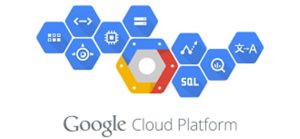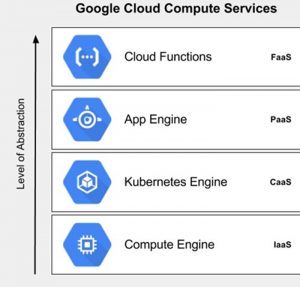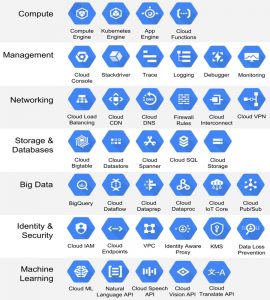Google Cloud Platform
The Google Cloud Platform (GCP) is a portfolio of cloud computing services and solutions, originally based around the initial Google App Engine framework for hosting web applications from Google’s data centers. (The Google App Engine was originally launched in 2008). GCP is now widely regarded as one of the top three premier cloud computing platforms available. However, it still trails Amazon Web Services (AWS) and Microsoft Azure in market share. GCP’s pricing models are very different from those of AWS or Azure.
Following the introduction of Google App Engine, Google later released a variety of complementary tools, including a data storage layer, and Google Compute Engine, which is Infrastructure as a Service (IaaS), and supports the use of virtual machines. Once establishing itself as an IaaS provider, Google added additional products including;
- a load balancer,
- DNS, monitoring tools, and
- data analysis services
This brought GCP closer to functional parity with AWS and Azure, making them much more competitive in the cloud market.
Even though it has drawn closer to the functionality offered by AWS, GCP is no ‘cookie-cutter’ version of AWS. GCP apparently seeks to differentiate itself, through a hybrid cloud and multi-cloud strategy.
GCP is a dramatically more sophisticated cloud solution, than it was just a year ago.

Google Cloud Compute Services
Google Cloud Compute Services currently consists of four components;
- Cloud Functions
- App Engine
- Kubernetes Engine
- Compute Engine
Each of these abstracts a different part of the solutions architecture, as follows;
- Cloud Functions abstracts the application layer, and provides a control surface for service invocations
- App Engine abstracts the infrastructure, and provides a control surface at the application layer
- Kubernetes Engine abstracts the Virtual Machines (VM’s), and provides a control surface for managing Kubernetes cluster and related hosted containers
- Compute Engine abstracts the underlying hardware and provides a control surface for infrastructure components

Google Cloud
Architectural Framework & Solution Scenarios
On page GCP-1, we review architectural options and solution scenarios, for those deploying the Google Cloud Platform to deliver on organizational IT functional requirements. The four ‘Architectural Framework‘ ‘families‘ and associated solution scenario sets, including;
- Infrastucture Updating
- Data Control
- Application Development
- Analytics Development
are summarized immediately below, along with their specified components;
infrastructure updating
- Hybrid
- Networking
- Migrations
- Security & Compliance
- Windows
DATA CONTROL
- Databases
- Storage
- SAP
- Energy
- Healthcare
- Media
APPLICATION DEVELOPMENT
- Hybrid
- Networking
- Migrations
- Security & Compliance
- Windows
Analytics development
- Big Data
- Data Warehouse
- AI & ML
- Retail & eCommerce
- Financial Services
If you would like to get to the detailed review of these ‘Solution Scenario’ options, please go here:
Google Cloud-1
Google Cloud
Specific Tools & Applications
We also provide a review of specific Google Cloud Platform services, tools and applications by seven (7) functional area. These functional areas are listed below;
- Compute
- Management
- Networking
- Storage & Databases
- Big Data
- Identity and Security &
- Machine Learning
A graphic which displays these seven(7) functional areas, which contains thirty-eight(38) specific tools & applications, may be found next;

If you would like to get to the detailed review of these tools & applications, please go here:
Google Cloud-2
We WILL deliver the solution that you need !
As a first step, we will be delighted to answer any and all of your questions !
Contact Us Today !